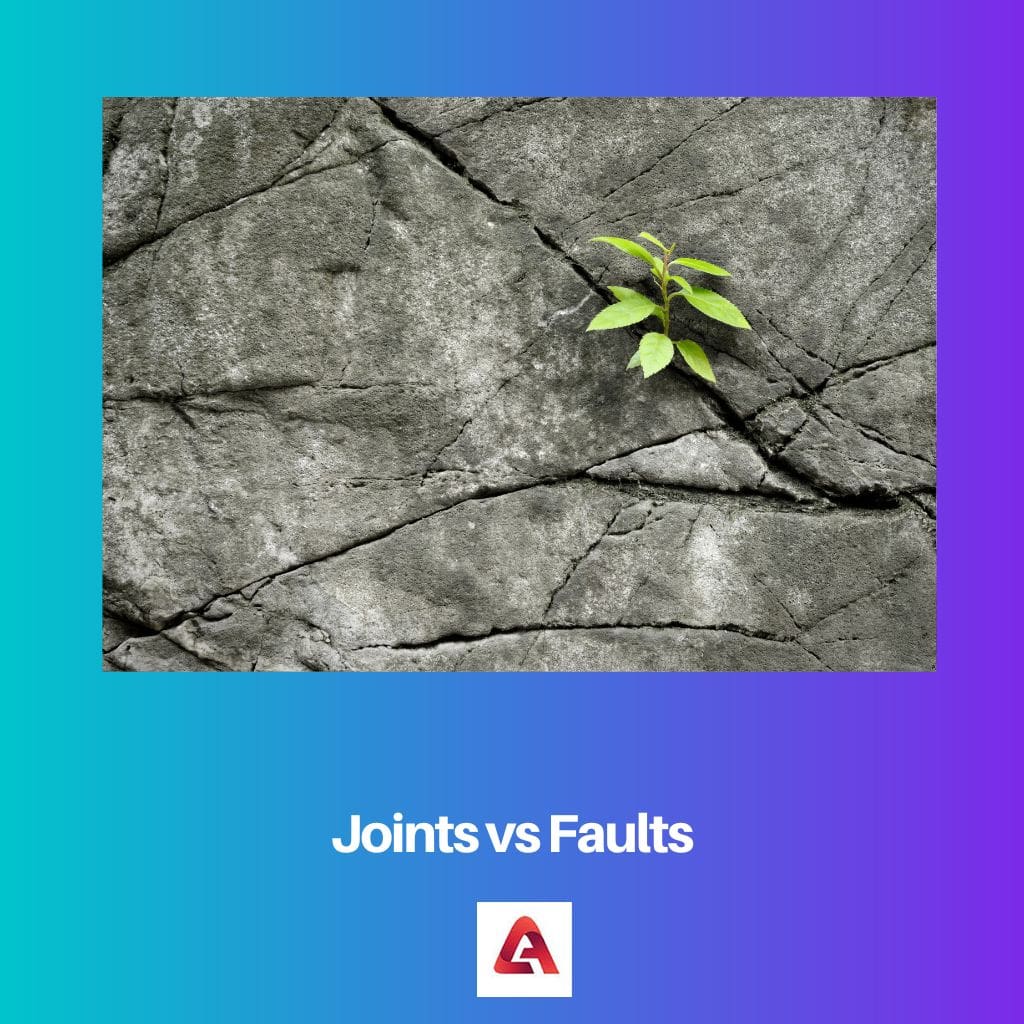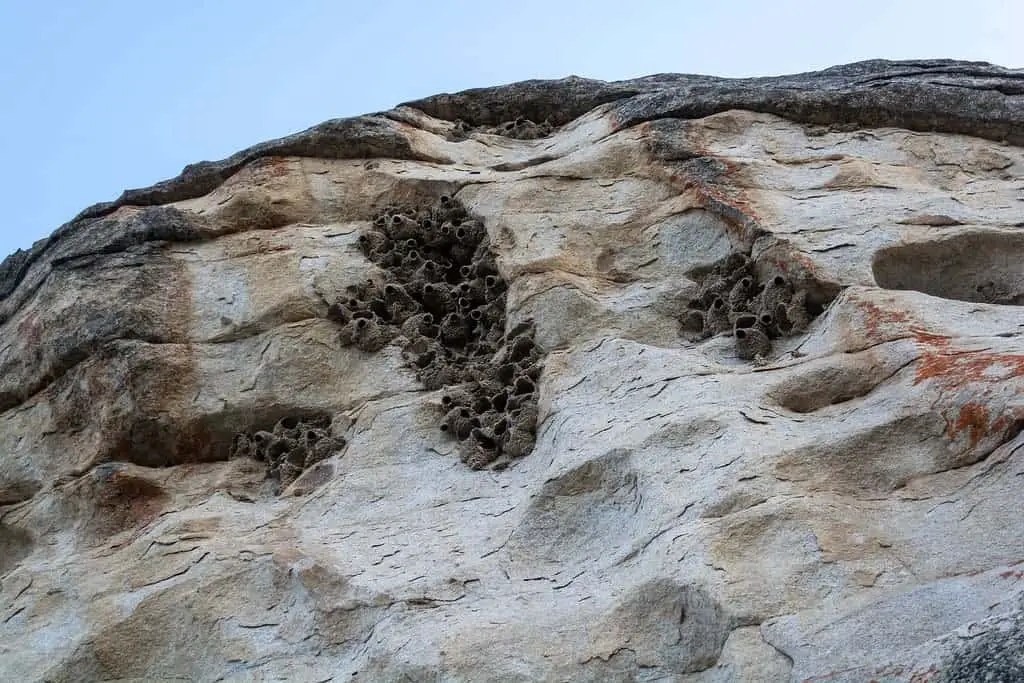Geology is an interesting subject that holds many terms that have quite similar meanings yet are completely different. This happens with almost every branch of science, too, and we call it the difference in literature. Joints and faults are the types of fractures or cracks in a rock due to weathering of rocks for a long period.
In the language of science and the language of commoners, there lies a difference in understanding. Therefore, the difference between joints and faults might not be notable to the commoners, but in terms of geology, they hold vast differences among themselves.
Key Takeaways
- Joints are natural cracks or fractures in rocks, while faults are breaks in rock along which there has been movement.
- Joints are caused by stress and pressure on the rocks, while tectonic forces cause faults.
- Joints are straight or curvy lines, while faults can be straight or wavy.
Joints vs Faults
Joints are fractures or cracks in the rock that do not involve movement or displacement of the rock on either side of the fracture. Joints can form due to a variety of geological processes. Faults are fractures or cracks in the rock that involve movement or displacement of the rock on either side of the fracture. Faults can form due to tectonic activity.

When a rock is pushed beyond its breaking point due to natural strains like wind, water, and earth flow, joints develop. This occurs because the buildup of dirt on rock formations increases their bulk, causing them to break apart.
But, above and beyond these characteristics, many individuals are concerned about the threat that these fissures may offer to human civilization. Some joints may also be the reason for the huge hills and mountains we see in the present day!
Fissures like horizontal stripes are the appearance of a typical joint fracture. Faults, on the other hand, are quite scary, to be honest. Faults are the faults on the surface of the rock, and they are formed when a rock is shattered, and the fault lines can sometimes extend to miles and kilometres!
Surprising facts about fault lines are that the faults were created back in the times when the earth was “young”, and after the long process of evolution for millions of years, dirt and dust have covered these fault lines.
As a result, whenever the tectonic plates move, the fault lines exponentially increase the intensity of earthquakes, making them scary and dangerous for human beings and civilizations.
Comparison Table
| Parameters of Comparison | Joints | Faults |
|---|---|---|
| Definition | These are fractures over rocks caused by natural phenomena that result in continuous strain on rocks and hence fissures appear on the surface. | These are hairline or sectional fractures on the rocks caused by tectonic movements. |
| Appearance | Long and horizontal or vertical fissures. Sometimes it resembles ‘flow’ patterns. | Cracks and crevices on the surface of rocks, covered by accumulated dust and dirt for years. |
| Cause | Rocks reach the breaking point due to strenuous weather conditions and develop these fissures. | Caused by rigorous tectonic movements and crackings. |
| Size | Smaller and compact in size. Usually, they are like long stripes. | Can range up to miles and might be as big as a country sometimes! |
| Movement | No movement occurs. | Movement occurs when tectonic plates move and can cause natural disasters like earthquakes and tsunamis. |
What is Joints?
When we take a glance into the world of rocks and earth, geology exhibits a commonly used geological term for weathering of rocks. Joint is the result of this weathering, and it’s simply a fracture caused on the rock due to strenuous weather conditions like water flow and wind and temperature fluctuations.
These are static and do not cause any harm, unlike the faults. Because they do not entirely divide rock formations, joints have very little or no mobility. Joints are comparatively compact and lesser in size than faults and may be found in nearly every type of rock formation.
They are very commonly found on sedimentary and red sand rocks because of the formation process of these rocks. Joints are among the most common geologic features, appearing in almost every rock exposure.
They come in a variety of shapes, sizes, and arrangements, and they may be found in a variety of tectonic settings. The exact source of the pressures that produced certain joints and related joint sets is sometimes vague, imprecise, and even contentious.

What is Faults?
Just like joints, faults are also the result of weathering in rocks. Hair-line fractures and cracks over the surface of rocks, however, faults are much more fatal than harmless joints. Faults are distinctly specified because they are susceptible to lateral displacement induced by tectonic forces under the Earth’s surface.
Faults are also known as “Nature’s Movers” because of their mobile nature, they are the primary cause of earthquakes and tsunamis. The continuous movement beneath the Earth’s crust causes faults.
Faults split rock formations, making them prone to earthquakes. The movement of tectonic plates directly affects the fault fissures of these huge rocks, and as a result, the shocks transfer from the rocks to the civilization built upon them.
A fault plane is a flat plane that depicts a fault’s fracture rate concerning time and the type of surface. A fault trace, also known as a fault line, is a location on the surface where the fault may be viewed or mapped.
A fault trace is also the line that is used to indicate a fault on geologic maps. These terminologies vastly help geologists to determine the age and duration of the faults in the rock.
Main Differences Between Joints and Faults
- Joints are smaller and more compact than faults.
- Joints are caused by strenuous conditions of nature that push the rocks to their limits, whereas faults are caused by tectonic movements.
- Joints are immobile irrespective of the tectonic movements, whereas faults are mobile and can cause tectonic shocks too.
- Joints cannot cause any natural disasters, but faults are the primary reasons for tsunamis and earthquakes.
- Joints are of three types; Systematic, non-systematic, and columnar, whereas faults are of six types; strike-slip, dip-slip, oblique, listric, ring, and synthetic faults.
- https://www.britannica.com/science/fault-geology
- https://www.encyclopedia.com/earth-and-environment/geology-and-oceanography/geology-and-oceanography/joint-geology

The clear and detailed examination of joints and faults in this article provides valuable knowledge for individuals wishing to grasp the scientific principles underlying geological formations.
The detailed comparison of joints and faults in this article is informative and beneficial for those seeking to understand the geological processes behind rock formations.
This article offers an insightful analysis of joints and faults, making it an excellent resource for those seeking to delve into the complexities of geology.
The clear explanation of joints and faults in this article is a valuable resource for anyone interested in geology.
The content of this article is enlightening and provides a thorough examination of joints and faults, enhancing the reader’s understanding of geological concepts.
This article explains the scientific differences between joints and faults in an informative manner. It would be beneficial for students pursuing geology.
The thorough exploration of joints and faults in this article is useful for individuals interested in the geological aspects of rock formations.
The article effectively outlines the distinctions between joints and faults, providing crucial information for those studying geology.
This article offers a comprehensive overview of the causes and characteristics of joints and faults, serving as a great educational tool for anyone seeking to expand their knowledge of geology.
The article provides a detailed comparison between joints and faults, making it easy for beginners to understand the differences between the two geological terms.